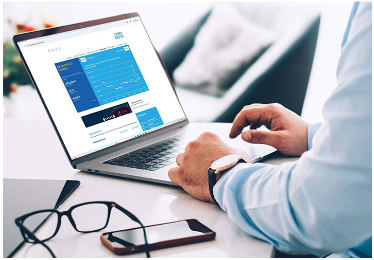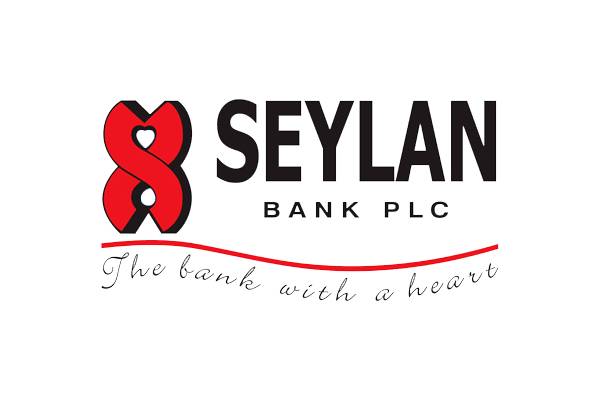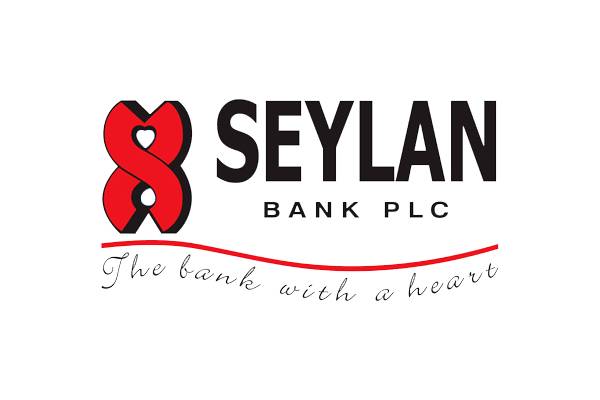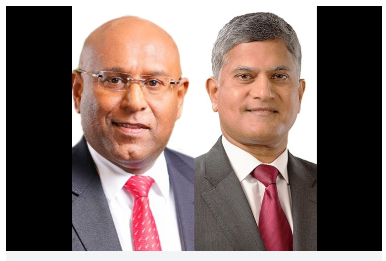21 Feb 2023
Harnesses strength from versatile business strategy and investments in digital drive
21 February 2023, Colombo, Sri Lanka
Total operating income up by 38% to LKR 43 Bn
Impairment charges of LKR 29 Bn reflecting macro-economic stresses
Continually enhanced cost to income ratio of 27%
Twin affirmations as Best Bank in Sri Lanka 2022 by Global Finance USA and Euromoney
National Development Bank PLC (NDB/ the Bank) released its financial statements for the financial year ended 31 December 2022 to the Colombo Stock Exchange on 21 February 2023. The Bank’s Director/ CEO Mr. Dimantha Seneviratne, commenting on the performance for the period stated that 2022 was notable for the never-before seen challenges affecting the Sri Lankan economy, from both domestic and international fronts. Unprecedented and unchartered times like these put to test the true resilience, versatility and agility of corporates. I am pleased to note that NDB gracefully withstood these challenges, particularly in preserving liquidity and capital adequacy – which were made possible by its agile strategy tactically recalibrated in response to shifting operating landscape. Whilst factors beyond the control of the Bank and the industry collectively continued to dampen profitability, the Bank generated sound operational results, as reflected in a 77% growth in gross income, 38% growth in total operating income and a vastly improved cost to income ratio across the industry at 27% due to cost management initiatives, which affirm the strength and stability of NDB’s foundation and the agility of the NDB Team. As Sri Lanka converges with the optimistic path to economic recovery with anticipated assistance of the International Monetary Fund, NDB remains committed in its duty towards the nation, he further stated.
Analysis of financial performance
Profitability
NDB recorded a profit attributable to shareholders of LKR 3.0 Bn at the Group level, whilst post and pre-tax profits at the Bank level closed in at LKR 2.9 Bn and LKR 2.0 Bn for the financial year 2022. Compared to 2021, these were negative growth rates of 56%, 54% and 80% respectively, the continuation of year-long and industry-wide profit deceleration attributable to the macro-economic shocks that severely impacted the banking sector, including large impairments. Notwithstanding the challenges, the Bank demonstrated strength in core banking operations with total operating income, comprising fund and fee based income increasing by 38% YoY to LKR 42.7 Bn in 2022. Net interest income, the majority contributor in operating income enhanced by 42% over the prior year, to LKR 30.7 Bn. Interest income of LKR 97.9 Bn which increased by 86% and interest expenses of LKR 67.2 Bn which increased by 116% drove NII, together with a Net Interest Margin (NIM) of 4.00%. Triggered by the highest-ever increase in regulator policy rates within a 12 months window, where the Standing Deposits Facility Rate and Standing Lending Facility Rate were increased by 950 bps to 14.5% and 15.5% respectively, all benchmark interest rates moved exponentially high in 2022. Interest rates within NDB moved in tandem, with timely re-pricing of the loan book and deposits mobilization at prevailing market rates. The Bank also experienced aggressive appetite in customers for time deposits, including the shifting of existing low cost deposits to time deposits to capitalize on the historically high deposits rates. This explains the larger increase in interest expenses. Amidst such conditions, effective assets and liability management supported the Bank in enhancing its NIM to 4.00% from 3.25% in 2021.
On fee based income, net fee and commission income grew by 12% to LKR 6.3 Bn over 2021, primarily driven by fee income generated from trade related activities. All other non-fund based income accounted for LKR 5.7 Bn, a 51% YoY growth mainly stemming from FCY reserve revaluation gains due to the sharp depreciation of the Rupee by over 80% in 2022. Within this, net gain/(loss) from trading declined by 116%, with trading opportunities in Fixed Income adversely affected due to lack of liquidity and market participants throughout 2022.
Impairment charges for loans and other losses, one of the most intense challenges that the banking sector is grappling with, continued to rise. The year saw NDB’s total impairment charges increasing by 185% to LKR 29.3 Bn. Impairment charges were on account of exposure to foreign currency denominated Government securities and the Bank’s loan book. The former comprised the greater portion of impairment, factoring in the revisions to the sovereign rating of the country to Restricted Default in May 2022 on account of the country’s debt restructuring measures and the impact arising from rupee depreciation. Impairment provisions for loans also increased during the period, to reflect macroeconomic impact on loan book quality, the major factor being reduced debt serviceability of customer across all segments, exacerbated by high inflation and negative GDP growth. Resultantly, the Impairment (Stage 3) to Stage 3 Loans Ratio increased to 37.44% (2021: 32.81%) whilst the Impaired Loans (Stage 3) Ratio stood at 6.24% (2021: 4.55%)
With regards to controllable costs denoted in total operating expenses, NDB recorded LKR 11.4 Bn for the year, which gratifyingly was only a 9% YoY increase amidst high inflation that prevailed for most of the year, steep depreciation of the Rupee and revisions to taxes - all of which collectively drove expenditure up. The discipline demonstrated around controllable costs across the Bank, conformity to guidelines issued by the Central Bank of Sri Lanka on discretionary expenses, large operational efficiencies and cost saving achieved through automation and digitization initiatives in both customer service and internal processes augured well for the Bank during the year. The cost to income ratio improved to 27% from dual factors of well managed costs and enhanced revenue.
Balance Sheet Performance
By end 2022, total assets of the Bank stood at LKR 833 Bn, an 18% increase over 2021, mainly driven by the Rupee depreciation. Gross loans to customers was LKR 580 Bn, an increase of 10% over 2021. Besides the inflationary impact of the Rupee depreciation, loan book increase comprised loans granted within the Bank’s enhanced precautionary risk parameters and as warranted within the ailing economy with a negative GDP growth. On Balance Sheet funding, customer deposits closed in at LKR 672 Bn, a 22% increase over 2021, benefiting from the focused deposits mobilization during the year, which also largely supported the Bank to maintain sound liquidity positions. Total assets at the Group level was LKR 839 Bn.
Investor KPIs, Liquidity and Capital Adequacy
Key investor ratios moderated in 2022, resulting from challenged profitability levels as elaborated above. Accordingly, Return on average equity and Earnings per share were 4.75% (Group: 4.62 %) and LKR 7.65 (Group: LKR 7.92) respectively. Pre-tax Return on Average Assets was 0.26% (Group: 0.34%) and Net asset value per share was LKR 167.16 (Group: LKR 177.60). Regulatory Liquidity Coverage Ratio (Rupee), Liquidity Coverage Ratio (All Currency) and Net stable Funding Ratio stood well above the regulatory minimum requirement of 90% at 297.08%, 232.68% and 130.87% respectively. The Consolidated Statutory Liquid Assets Ratio of 27.24% was also well above the regulatory minimum requirement of 20%. The Bank maintained sound liquidity levels right throughout the year despite the many stresses and continually met the regulator stipulated minimum levels. All obligations of the Bank in both local currency and foreign currency were met in a timely manner, with fortified support extended to customers in need of foreign currency liquidity.
Tier I and Total Capital Adequacy ratios by end 2022 stood at 9.34% (Group: 9.87%) and 13.35% (Group: 13.81%), ahead of the regulatory minimum levels of 8.5% and 12.5% respectively, before considering capital relief measures on capital conservation buffers introduced by the CBSL recently. The Bank’s prudent balance sheet repurposing in response to rising impairments and exchange depreciation driven balance sheet inflation, enabled the Bank to preserve capital adequacy and remain stable.
Outlook
The after-effects of the Sri Lankan economic crisis are expected to be felt with greater intensity in 2023. With regards to the banking sector - the nerve centre of the economy, recovery and growth paths will be gradual. Clarity on the Government’s finalized debt restructuring plans will be a key determinant of such recovery and growth pace. NDB embraces the fact that customer support is vital at this moment. The Bank has established a dedicated Remedial Unit in supporting distressed customers maintain financial resilience and healthy repayments. The Bank’s other strategic priorities, such as innovations on digital front, customer-centricity, empowering the women’s market segment, internal process streamlining and automations, staff development, combatting climate change and community support will continue unabated, affording NDB a strong platform to launch ahead, once the country’s economic conditions improve.
Reflecting the sound equilibrium in performance that NDB maintained during the year, NDB emerged as the Best Bank in Sri Lanka 2022, securing twin awards from the prestigious Global Finance USA and Euromoney. The Bank was adjudged the Best Bank for Digital Solutions Sri Lanka 2022 by Asiamoney, with the total awards tally exceeding 70 for the year. NDB also emerged as the Most Awarded Corporate in Sri Lanka for 2021 as per annual rankings of LMD Magazine.






